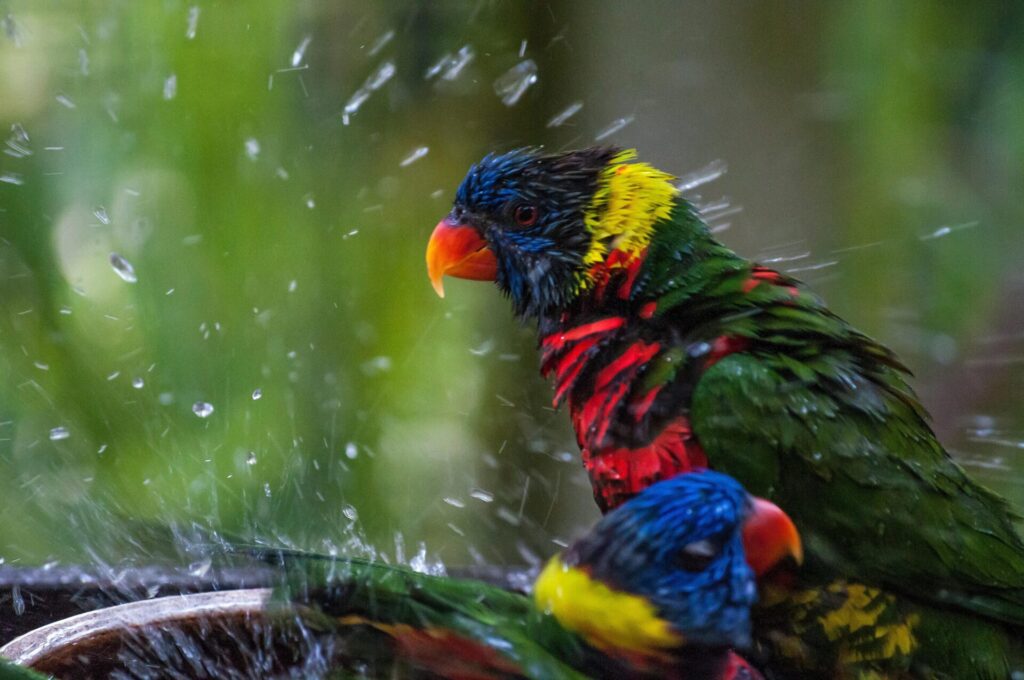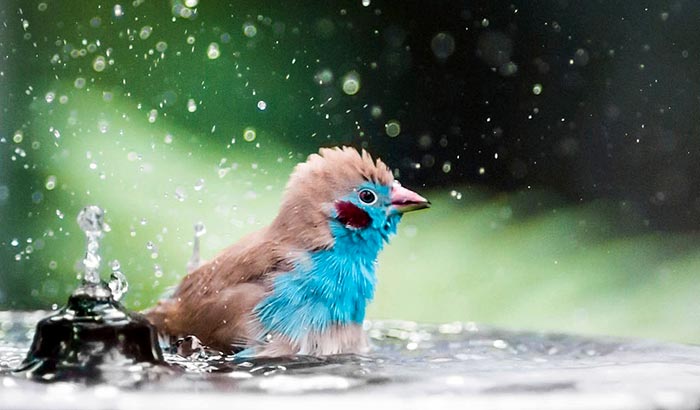Bathing is a crucial aspect of maintaining the well-being of your avian companion. While birds groom themselves, providing a proper bathing routine is essential for optimal feather health and overall happiness. In this comprehensive guide, we’ll explore the importance of bird bathing and provide a step-by-step approach to ensure your feathered friend enjoys a refreshing and stress-free bathing experience.
Understanding the Significance of Bird Bathing
Feather Health and Preening
Birds use bathing as a natural method of preening and cleaning their feathers. Bathing helps remove dust, debris, and excess oil, promoting healthier plumage and facilitating the essential preening process.
Behavioral and Psychological Benefits
Beyond physical health, bathing offers birds mental stimulation and relaxation. It mimics their natural behavior in the wild, creating a positive and enriching experience for your feathered companion.
Step-by-Step Guide to Bird Bathing
1. Choose the Right Bathing Vessel
Select a bird bath that suits your bird’s size and preferences. Options include shallow dishes, hanging baths, or mist sprays. Observe your bird’s behavior to determine their preferred bathing method.

2. Establish a Routine
Consistency is key. Establish a regular bathing routine to help your bird anticipate and enjoy the experience. Birds often feel more comfortable with a predictable schedule.
3. Optimal Water Temperature
Ensure the water temperature is lukewarm, mimicking natural rain. Avoid extremes, as birds prefer moderate temperatures. Lukewarm water encourages your bird to bathe willingly.
4. Introduce Gradually
If your bird is new to bathing, introduce water gradually. Begin with mist sprays or lightly dampened cloths to gauge their comfort level. As they become accustomed, you can transition to a traditional bath.
5. Monitor Body Language
Observe your bird’s body language during bathing. Signs of enjoyment include fluffing feathers, shaking, and vocalizations. Conversely, if your bird seems stressed or agitated, adjust the bathing method or frequency accordingly.

6. Drying Time
After bathing, provide a warm and draft-free environment for your bird to dry naturally. Ensure they are comfortably warm before returning them to their regular living space.
Overcoming Challenges
Bird Bathing Resistance
If your bird resists bathing initially, be patient and try different methods. Some birds prefer mist sprays, while others may enjoy bathing in a shallow dish. Experiment to find what works best for your avian companion.
Health Considerations
If your bird exhibits reluctance or avoids bathing altogether, consult with an avian veterinarian. Health issues or feather problems may be contributing factors.
Conclusion
Bathing is a fundamental aspect of avian care, contributing to both physical and mental well-being. By following this step-by-step guide and adapting to your bird’s preferences, you create a positive bathing experience, fostering a happy and healthy feathered friend.





















